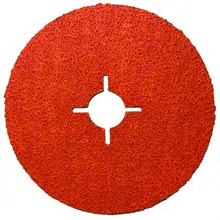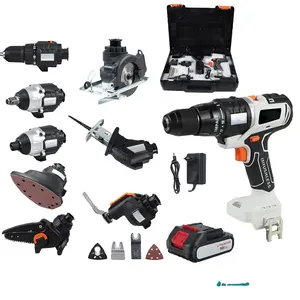The cordless sander is indispensable for a wide array of sanding tasks, providing unmatched autonomy and versatility. Freed from the constraints of power cords, this battery-operated apparatus allows for work in diverse environments. For professionals seeking efficient, mobile solutions for their sanding requirements, the cordless sander proves exceptionally advantageous.
Types and Applications of Cordless Sanders
Exploring the variety of cordless sanders, each model offers distinct features suited to particular functions. The DeWalt cordless palm sander is crafted for ease and precision, perfect for delicate sanding and finishing. The Makita cordless sander is celebrated for its stamina, making it the preferred choice for extensive industrial tasks. For more demanding work, such as on drywall, the DeWalt drywall sander is adept at covering larger areas and tougher substances. Conversely, the cordless belt sander excels in swift material removal, commonly employed in shaping and leveling operations. Each sander is customized for particular uses, ensuring firms can choose a tool that meets their project needs and boosts productivity.
Structure and Features of Cordless Sanders
The design of a cordless sander is thoughtfully engineered to enhance efficacy and user comfort. At its core is a potent motor, typically brushless for increased longevity and performance. The sanding pad is affixed through a secure, adjustable mechanism for swift sandpaper grit replacement. The battery compartment is cleverly positioned to distribute the tool's weight evenly, and the ergonomic handle is often outfitted with a soft grip to mitigate vibration and user fatigue. Advanced models, such as the Milwaukee M12 sander polisher, integrate smart electronics that regulate power flow according to the task, ensuring consistent speed and pressure for an optimal finish.
Materials and Durability
The selection of materials for a cordless sander is pivotal to its functionality and durability. The casing is typically made of high-impact plastics to reduce weight while preserving robustness. Aluminum and its alloys are frequently used for motor housing and internal parts, offering excellent heat dissipation and wear resistance. These materials are chosen not only for their resilience but also for their contribution to a tool that professionals can handle for prolonged periods without undue strain.
Business Usages and Applications
In the commercial sphere, cordless sanders are vital across sectors such as automotive, carpentry, and construction. In auto body work, for instance, the DeWalt cordless orbit sander is instrumental in pre-paint surface preparation, ensuring a pristine finish. Carpenters depend on the precision of a Makita sander 18V for creating furniture with smooth, contoured edges. In construction, the DeWalt cordless belt sander is invaluable for swiftly smoothing rough surfaces and prepping large areas. These instruments not only enhance the quality of the final product but also improve productivity through their user-friendly features and time-saving capabilities.
Functions and Capabilities
While the primary role of a cordless sander is to smooth surfaces, its abilities extend well beyond simple sanding. Equipped with appropriate attachments, these devices can strip paint, varnish, and even remove small quantities of material for detailed shaping. The Ryobi cordless sander, for example, excels in accessing nooks and crannies that larger sanders cannot, making it an excellent option for intricate work.
Features and Unique Selling Points
Each cordless sander boasts a suite of distinctive features that distinguish it from its rivals. For example, the DeWalt battery-powered sander often includes a dust collection system to keep the workspace tidy. The Makita cordless sander may feature a rapid charge battery system, reducing idle time. The Milwaukee sander polisher M12 stands out with its dual-function capability, allowing users to alternate between sanding and polishing without additional equipment.
Benefits and Positive Outcomes
The advantages of employing a cordless sander are numerous. These devices offer the convenience of portability, the effectiveness of battery operation, and the flexibility to adapt to a variety of materials and tasks. They address the challenge of dependency on a power source and fulfill the demand for a versatile, multipurpose tool. Users can anticipate a marked enhancement in work quality, as well as a decrease in the time and effort needed to accomplish tasks.
Effective Operation and Maintenance
Effective use of a cordless sander entails understanding its various speed settings and selecting the appropriate sandpaper grit for the material at hand. When choosing a model, factor in the types of projects you most often undertake and ensure the sander's specifications match those requirements. Cleaning involves routinely emptying the dust collector and wiping the tool post-use. Maintenance is generally straightforward, requiring only periodic checks of the battery contacts and keeping moving parts clear of debris. The installation of sandpaper or pads is usually a tool-free process, designed for efficiency and ease of change.
Target Audience and Meeting Needs
The target market for cordless sanders is broad, encompassing professional contractors, woodworkers, and DIY aficionados. For professionals, devices like the DeWalt cordless belt sander deliver the robustness and power necessary for demanding tasks. DIY enthusiasts might favor the Ryobi cordless sander for its straightforward operation and adaptability. Each product is conceived with the end-user in mind, ensuring that it not only satisfies but surpasses their sanding requirements and preferences.
How does a cordless sander enhance efficiency in sanding tasks?
A cordless sander boosts efficiency by enabling unrestrained movement and the capacity to operate in areas lacking direct electrical supply. The high-capacity batteries, such as those in the Makita sander 18V, guarantee sustained operation, rivaling the stamina of corded models. Efficiency is further augmented by features like variable speed controls and ergonomic designs, which diminish user fatigue and facilitate precise sanding.
What should be considered when choosing the right cordless sander for a business?
In selecting a cordless sander for commercial use, take into account the tool's intended application, battery longevity, ergonomics, and the availability of bespoke options. For instance, a DeWalt cordless belt sander may be optimal for intensive sanding, while a Milwaukee sander polisher M12 might be more suitable for polishing activities. It's also crucial to consider the types of materials most frequently sanded and whether the sander's motor speed and power are adequate for those materials.
How can businesses ensure the longevity of their cordless sanders?
To maximize the lifespan of a cordless sander, businesses should adhere to the manufacturer's usage and maintenance recommendations. Routine cleaning of the device, employing the correct sanding pads, and proper battery care are all essential. Opting for reputable brands such as DeWalt cordless sander or Makita cordless sander also contributes to extended durability, thanks to the superior materials and construction of these tools.













































 浙公网安备 33010002000092号
浙公网安备 33010002000092号 浙B2-20120091-4
浙B2-20120091-4